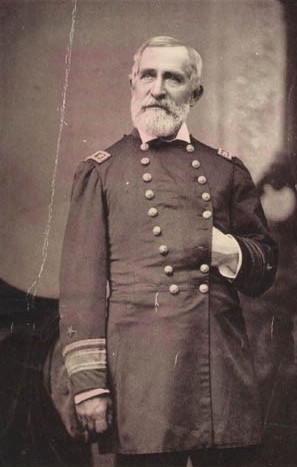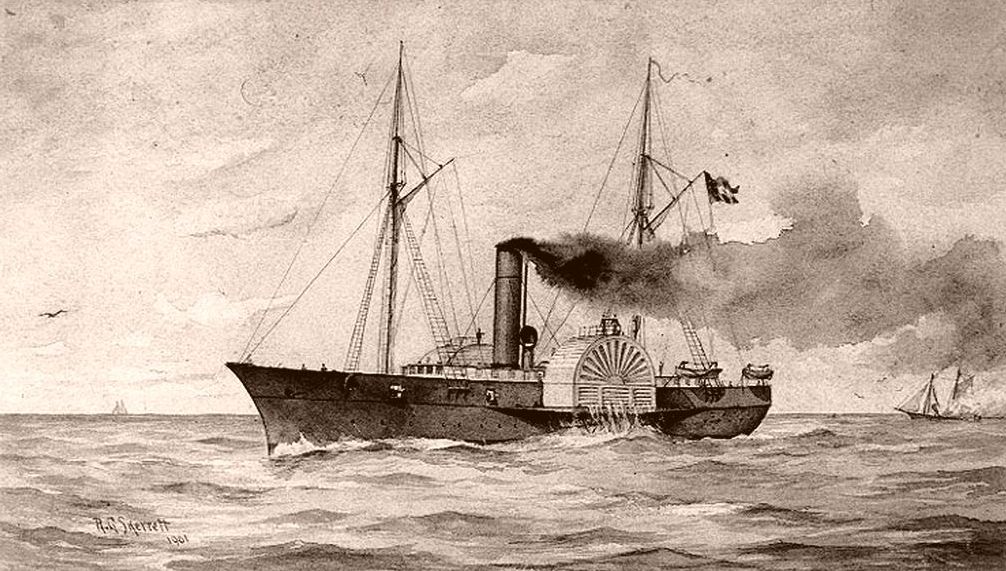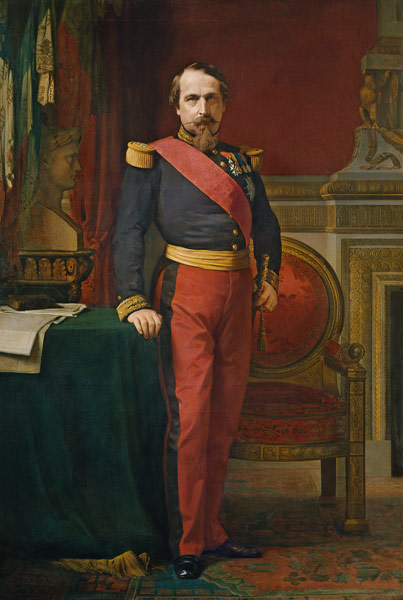Reader Suvorov continues his series about Confederate commerce raiding during the American Civil War.
In our last installment, we covered the Florida, the South’s first success in overseas construction of commerce raiders. Although the crew of the Florida ended up debilitated by yellow fever, their ability to dash through the blockade and return safely to Southern soil was another mark against the Union Navy.

George Preble
In response to criticism, Secretary of the Navy Gideon Wells and President Lincoln cashiered Commander George Preble, the unfortunate captain of the Oneida, which had been one of the ships that had failed to capture Florida. While it’s possible that Preble was being scapegoated, there does seem to have been, in the early years of the war, a problem in the command climate of Union ships: one author recounts that a captain off the coast of New Orleans was supposed to have hailed passing ships to try to obtain permission from his admiral to pursue a Confederate vessel.
Whether or not the humiliations suffered by the Union Navy were due to a lack of independent-minded officers willing to take initiative or just bad luck, Secretary of the Navy Gideon Welles found himself repeatedly criticized for the North’s apparent inability to capture Confederate commerce hunters. “Preble allowed one Anglo-rebel vessel to surprise him and run into Mobile, and was most severely punished. Secretary Welles allows the rebels to scourge the whole Atlantic with a privateer and devastate our commerce, and is yet retained in office, and not even reprimanded,” grumbled The New York Herald. Northern papers were attentive to the operations of Southern commerce raiders, and “the pirate Sumter” even graced the front page of Harper’s Weekly in 1862.
An English observer of Welles reportedly wrote that “there is such an air of ponderous deliberation about his face that you wonder whether he has ever clearly realized, in so short a time as one year, that America is in a state of civil war.” These remarks were reprinted in the United States as a source of humor, but some might have wondered whether the description was accurate.
Despite the criticism, however Welles refused to redirect additional ships to protect Northern commerce. This was almost certainly the correct decision: redirecting a few ships to hunt elusive commerce raiders would likely have simply wasted their valuable time and taken a step towards accomplishing the prime objective of the Southern Navy: relieving the blockade.

CSS Nashville
The North instead turned to diplomacy – which had successfully stymied Southern efforts to procure modern ironclads – to cut off English aid, a sore topic in the Northern states. The New York Herald complained at length that “the offending pirate”—the Nashville—“is not only admitted into an English port, but welcomed with open arms, and is there permitted to refit and be provisioned for another piratical cruise.” The Herald expected Secretary of State Seward to “secure from the British government a satisfactory explanation” for the Nashville’s ability to come and go as it pleased.
The truth was, Union ambassadors in London and elsewhere protested such indirect European aid to the Confederacy continually, but to little effect. The British response to the Union complaint about the Oreto during its construction was to admit that the ship was constructed with cannon emplacements but to assert that the ship “is not at present fitted for the reception of guns, nor are the builders aware that she is to be supplied with guns whilst she remains in this country.” Likewise, the English dismissed Union protests that they were aiding and abetting the “piratical craft” Sumter by allowing it to refuel in Trinidad.1 Union diplomatic efforts to hinder the commerce raiders had some success such as persuading local coal merchants not to refuel the Sumter, or pressuring the Spanish to return Semmes’ captured prizes,2 but efforts to shut foreign ports to Southern vessels were unsuccessful.

Napoleon III
However, the Union was much more successful at preventing the Confederacy from procuring front-of-the-line warships from European powers. Bulloch attempted to procure a pair of ironclads that were under construction for Egypt, but once again the Union’s ambassador to England, Charles Francis Adams, thwarted the deal. Similarly, attempts to secretly procure a quartet of corvettes and a pair of ironclad rams from French companies were detected and exposed by Union diplomats, and the French emperor, Napoleon III, was unwilling to risk the North’s wrath after the wave of Union victories in 1863 and forbade the sale of the vessels to the Confederacy.
Although the State Department may have saved the Union Navy from the threat of European-built ironclads, Bulloch’s ingenuity saw to it that the British-built Confederate commerce raider still had its day in the sun. We’ll discuss the further exploits of the Florida and Captain Semmes’ Alabama in our next post.
1 Interestingly, while an October 1861 letter says the Union denounced the Sumter as a pirate, a friendly letter from July of 1861 to Spanish authorities refers to the Sumter as a “privateer steamer.” This inconsistent treatment probably is illustrative of Northern hostility to England. ⇑
2 Note that it appears that the Spanish acted to releases Semmes’ prizes before receiving any significant Union diplomatic pressure on the matter. ⇑

Comments
It is worth pointing out the the Rebels openly coveted Spanish Caribbean colonies.
Not helping them out was probably an easy sell to the Spanish Crown.
the Rebels openly coveted Spanish Caribbean colonies.
As mentioned in the comments to the previous installment of this series: The Confederacy also was kind of terrible at public relations.